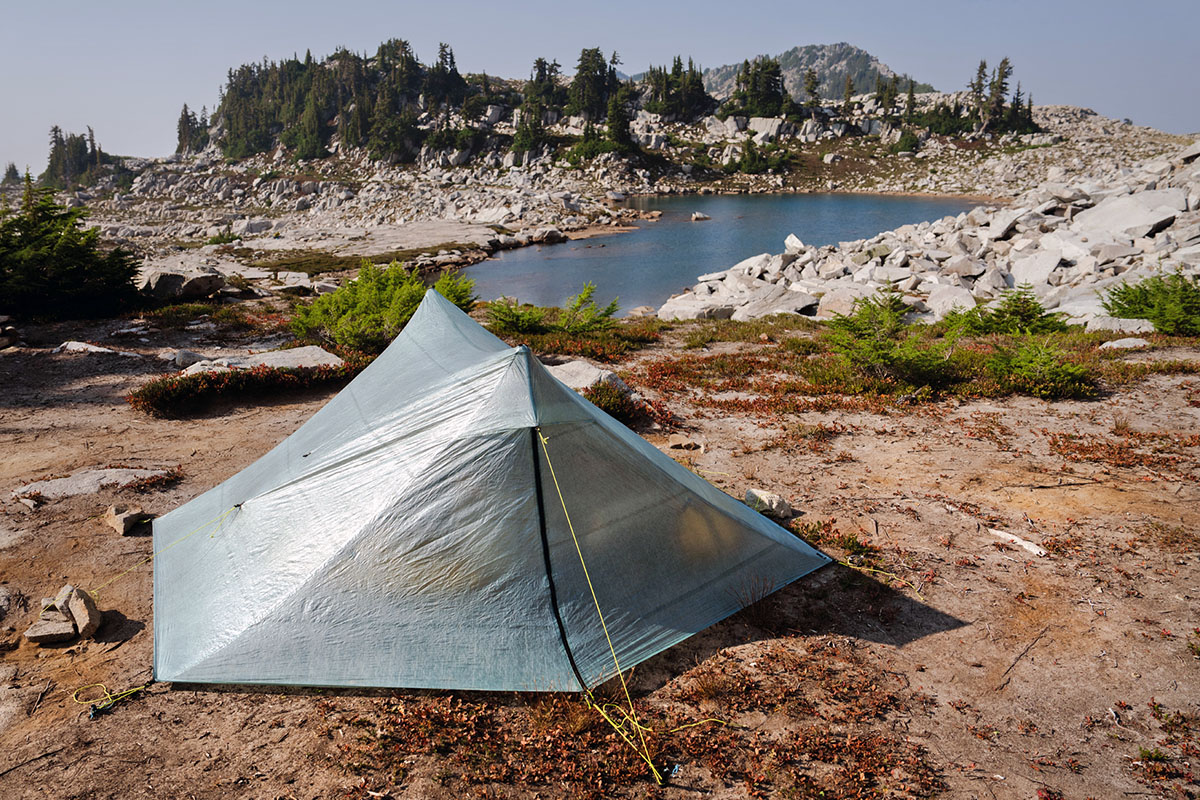
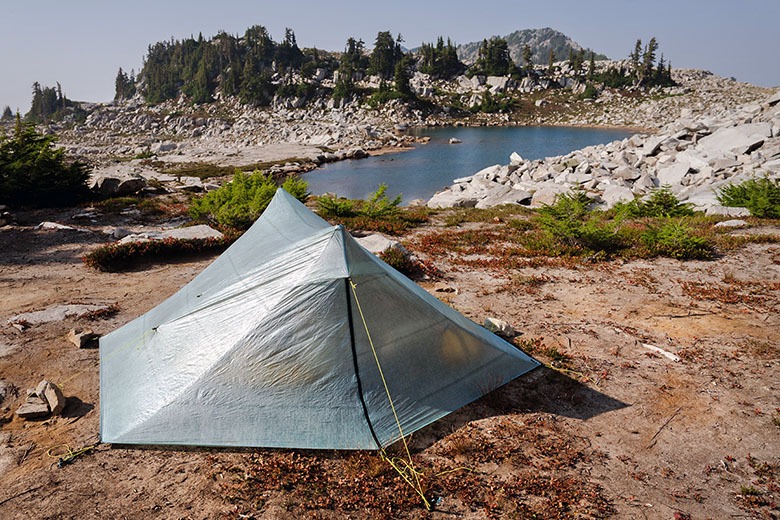
Price: $729
Packaged weight: 1 lb. 4.4 oz.
Floor dimensions: 90 x 45 in.
Capacities: 2P, 2+P, 3P
What we like: A time-tested and ultralight design with more durable Dyneema than much of the competition.
What we don’t: Vulnerable to high winds and rain; not as refined as tents from Durston and Hyperlite.
See the Zpacks Duplex Zip
Zpacks’ Duplex has long been one of the most popular trekking-pole tents on the market, with a design that deftly balances durability, spaciousness, and weather protection at a competitively low weight. Recently, Zpacks released the Duplex Zip, which modernizes the classic design with zippered storm doors (the doors used to be secured by a simple toggle), peak vents, and snazzy magnetic door keepers. We took the Duplex Zip backpacking in Washington’s high country on a few different occasions and were overall impressed by its performance, despite a few shortcomings listed below. To see how the Zpacks stacks up to the competition, check out our articles on the best ultralight tents and best backpacking tents.
The Zpacks Duplex Zip tips the scales at just 1 pound 4.4 ounces (excluding stakes). This is an astounding feat for a two-person tent, and Zpacks pulls it off by way of a trekking pole-supported structure (no tent poles needed), thin Dyneema fabrics, and streamlined components throughout. For comparison’s sake, most lightweight two-person backpacking tents hover around 3 pounds (including the 3-lb.-2.oz. Big Agnes Copper Spur HV UL2). There are a number of similarly ultralight trekking-pole designs, although many check in a bit heavier, including the Hyperlite Unbound 2P (1 lb. 8 oz.) and Tarptent Dipole 2 Li (1 lb. 10 oz.). Durston’s X-Mid 2 Pro is one of the only trekking-pole tents in its class that’s lighter than the Zpacks at 1 pound 3.7 ounces (also excluding stakes).
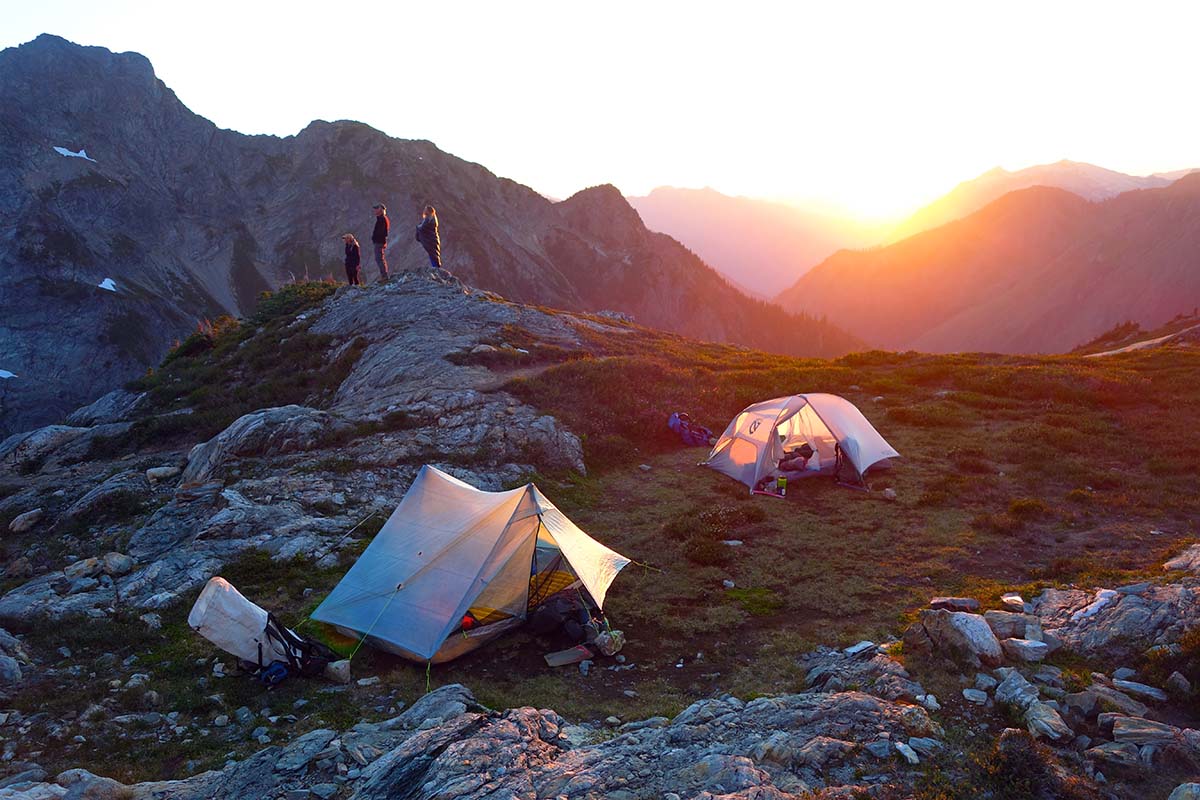
In terms of packed size, it’s first worth noting that—for all its strengths—Dyneema does not pack down super small. As a result, the Duplex Zip’s packed size is larger than that of many nylon tents—Zpacks’ listed measurement is 6 by 12 inches when packed into its stuff sack, which is about the same bulk as designs like the aforementioned Unbound 2P and X-Mid 2 Pro. If space is at a premium, you can also opt for a compression stuff sack. And while Dyneema trekking-pole tents are fairly bulky, keep in mind that you don’t have to factor in tent poles, which saves considerable space.
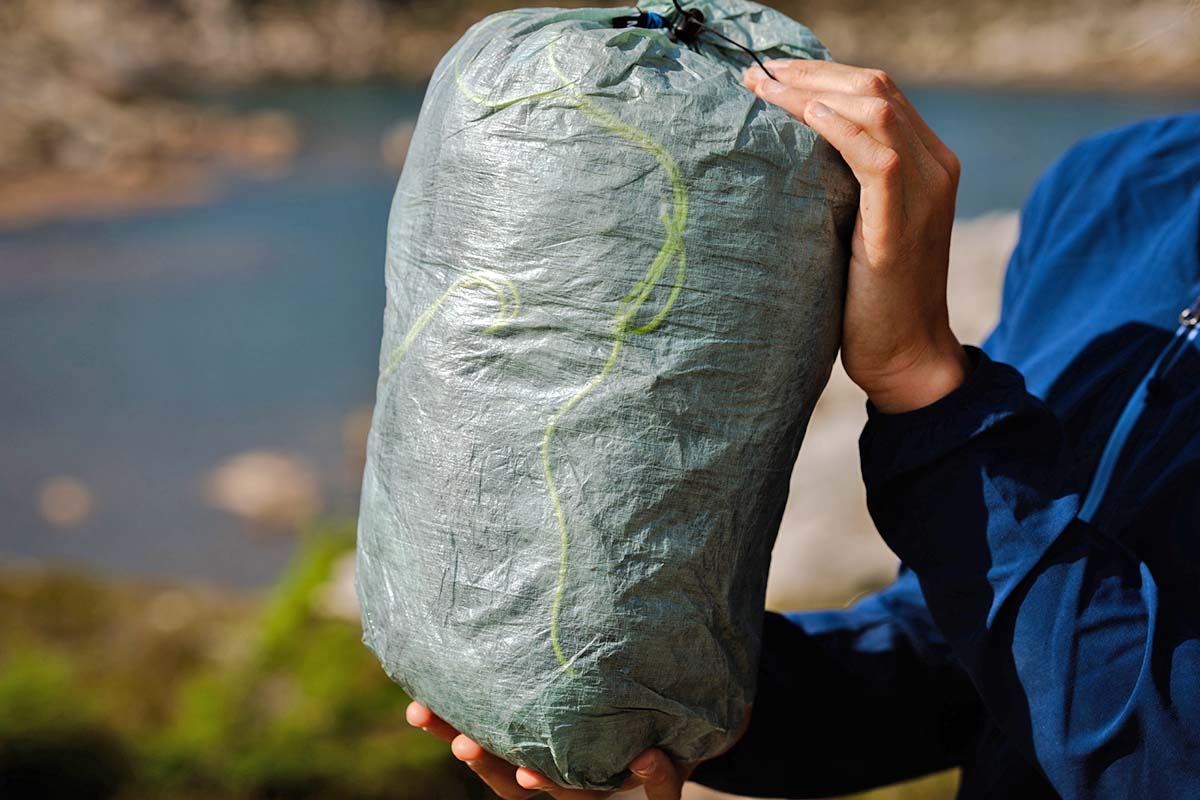
Trekking-pole tents often feature a larger floor area than freestanding and semi-freestanding backpacking designs, and the Duplex Zip is no exception. The floor measures 90 by 45 inches, which provides a spacious platform for two side-by-side sleeping pads while still leaving substantial room at either end (most standard-sized sleeping pads are 20 in. wide and 72 in. long). And unlike many ultralight backpacking tents, the floor is not tapered, which means you can sleep head-to-toe with your tentmate for more shoulder room and privacy. For comparison’s sake, the Duplex Zip offers around the same floor area as most comparable trekking-pole shelters (the Unbound 2P and X-Mid Pro 2 are 48- and 46-in. wide, respectively). On the other hand, a freestanding tent will have considerably more cramped dimensions—for example, the Nemo Hornet’s floor area measures 85 by 51/43 inches.
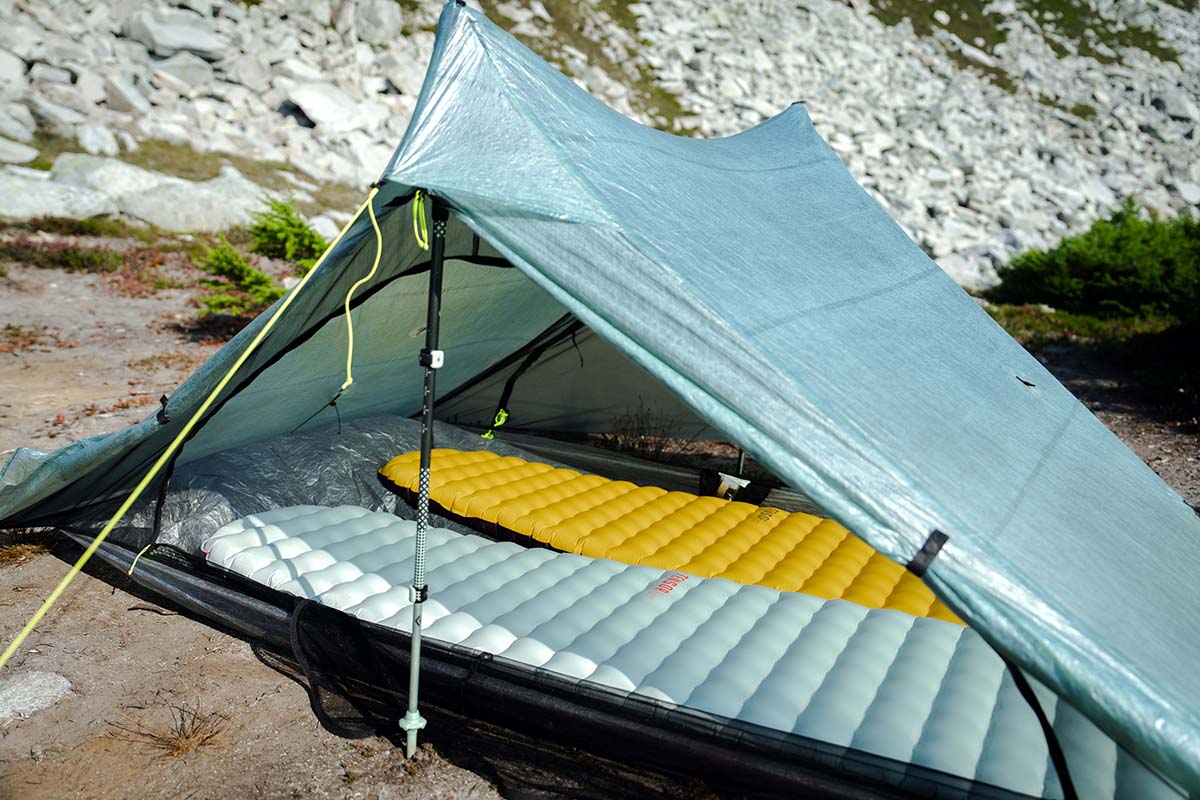
A tent’s peak height also contributes to livability, especially while changing clothes or sitting for long stretches of time during stormy days. I found that the Duplex Zip’s 48-inch peak height gave the tent a pretty expansive feel, far more so than the Nemo Dragonfly I’ve also tested, which has a larger floor area (88 x 50/45 in.) but a shorter 41-inch peak height. However, because the Zpacks’ peak is at the middle and slopes sharply downward toward each end, I had to sit carefully to avoid coming into contact with the canopy, especially when it was wet with condensation or precipitation. While this is doable with one person, the Zpacks starts to feel a bit more cramped with two. In contrast, the Durston X-Mid 2 Pro’s offset-pole design places two separate apexes closer to each end, which in my opinion is a better arrangement.
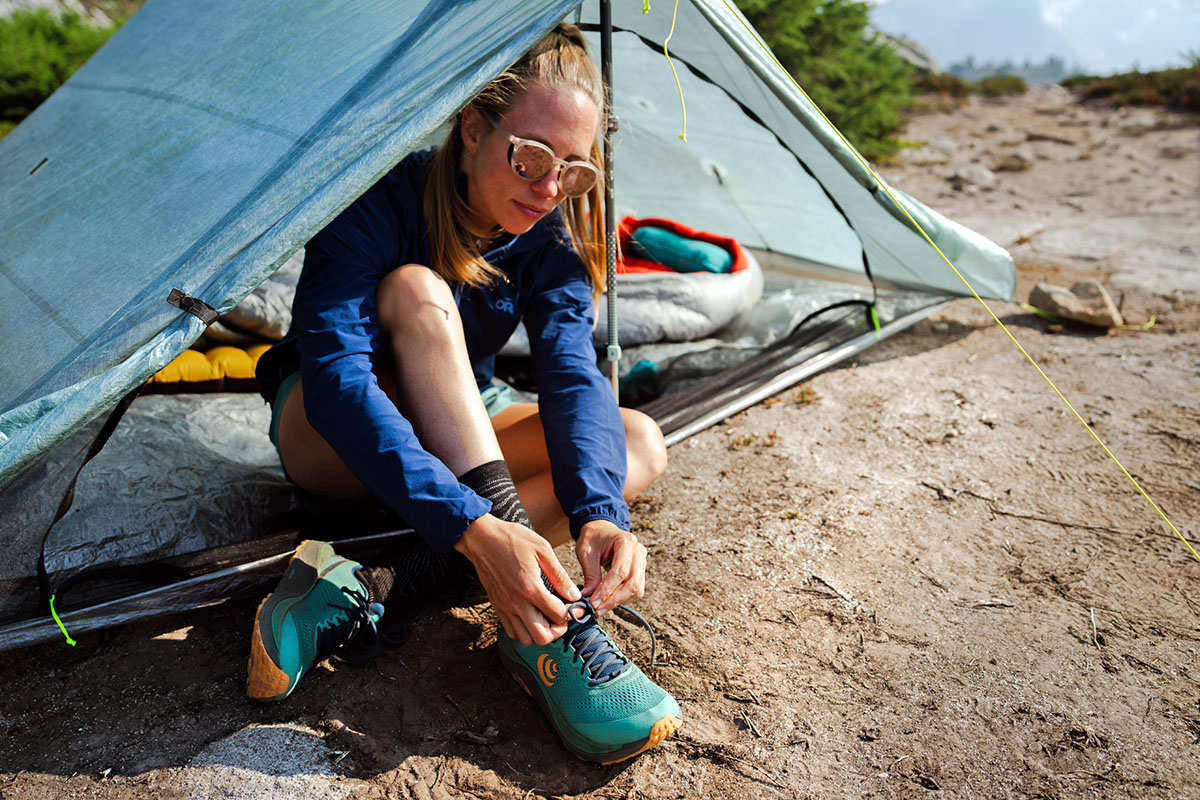
Among ultralight trekking-pole tents, the Zpacks Duplex Zip is known for its hardwearing nature, thanks to durable Dyneema materials in both the floor and canopy. Dyneema is a miracle fabric when it comes to tents, given that it’s inherently waterproof and doesn’t stretch or sag when wet. It also has a very high tensile strength, famously known for being stronger than steel at the same weight. However, it is prone to forming punctures, so it comes as good news that the Duplex Zip is built with relatively robust Dyneema—including a 1.0 ounce-per-square-yard (oz./sq. yd.) floor and the option between a 0.55 and 0.75 oz./sq. yd. canopy (the latter will cost you $729 and weighs 1 lb. 6.3 oz.). For comparison’s sake, the Hyperlite Unbound 2P has a thinner 0.8 oz./sq. yd. Dyneema floor and 0.55 oz./sq. yd. canopy. All told, the Duplex Zip remained unscathed even when pitched on sharp rocks (and the good news is that a few minor holes can be easily patched and will do little to affect the overall performance of the tent).
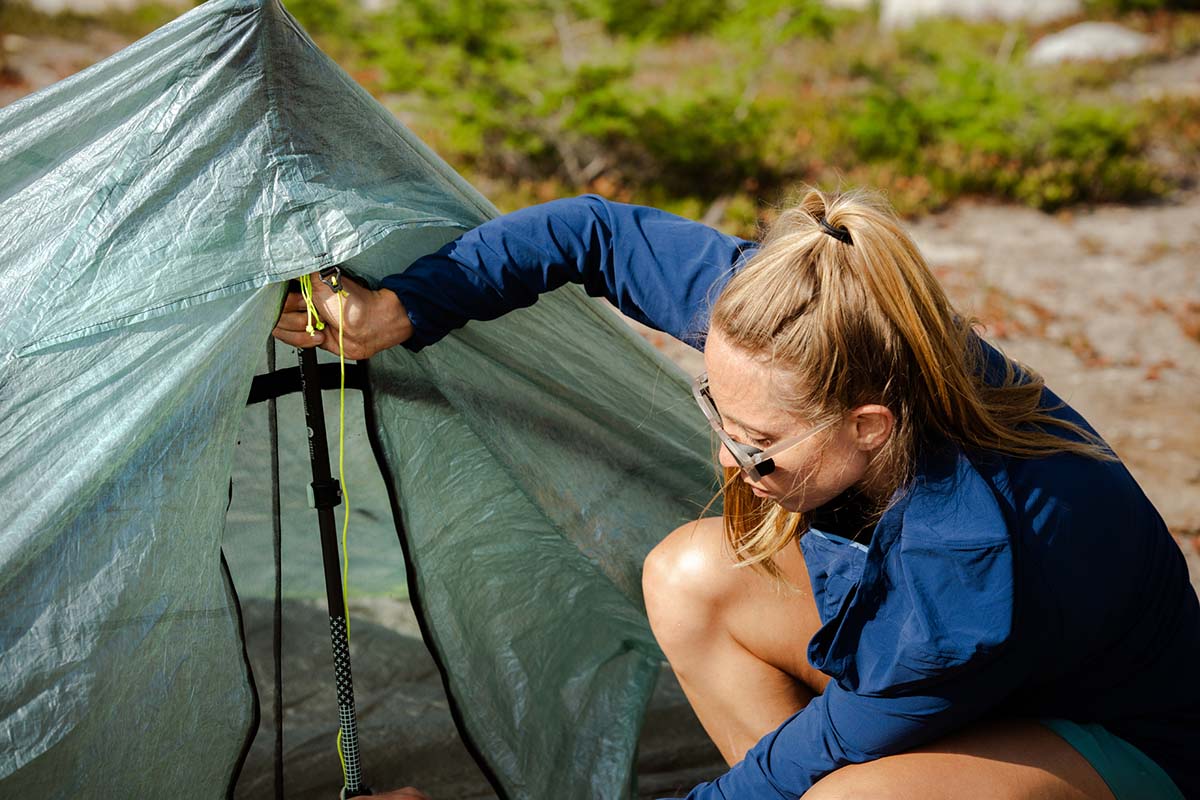
I was unsure what to expect from the Duplex Zip’s build quality—many Zpacks products I’ve tested in the past (including a sleeping bag, quilt, and jacket) have felt relatively homemade, including uneven stitching and loose threads. However, the Duplex Zip showed good attention to detail and inspired confidence with its bonded reinforcements, complete seam taping, and robust materials. My opinion did change slightly after testing the Hyperlite Unbound later in the summer, which has a high-end feel more reminiscent of a mass-produced Big Agnes or Nemo tent than a cottage-brand trekking-pole shelter. The Unbound’s contrasting colorways are sleek and stylish, no stitch is out of place, and premium components like door buckles create a great user experience. But the Zpacks’ thicker fabrics and lower weight are not to be overlooked. If you don’t mind a minor drop in aesthetics and ease of use, the Duplex Zip is a no-frills, durable tent that should last hundreds of nights in the backcountry.
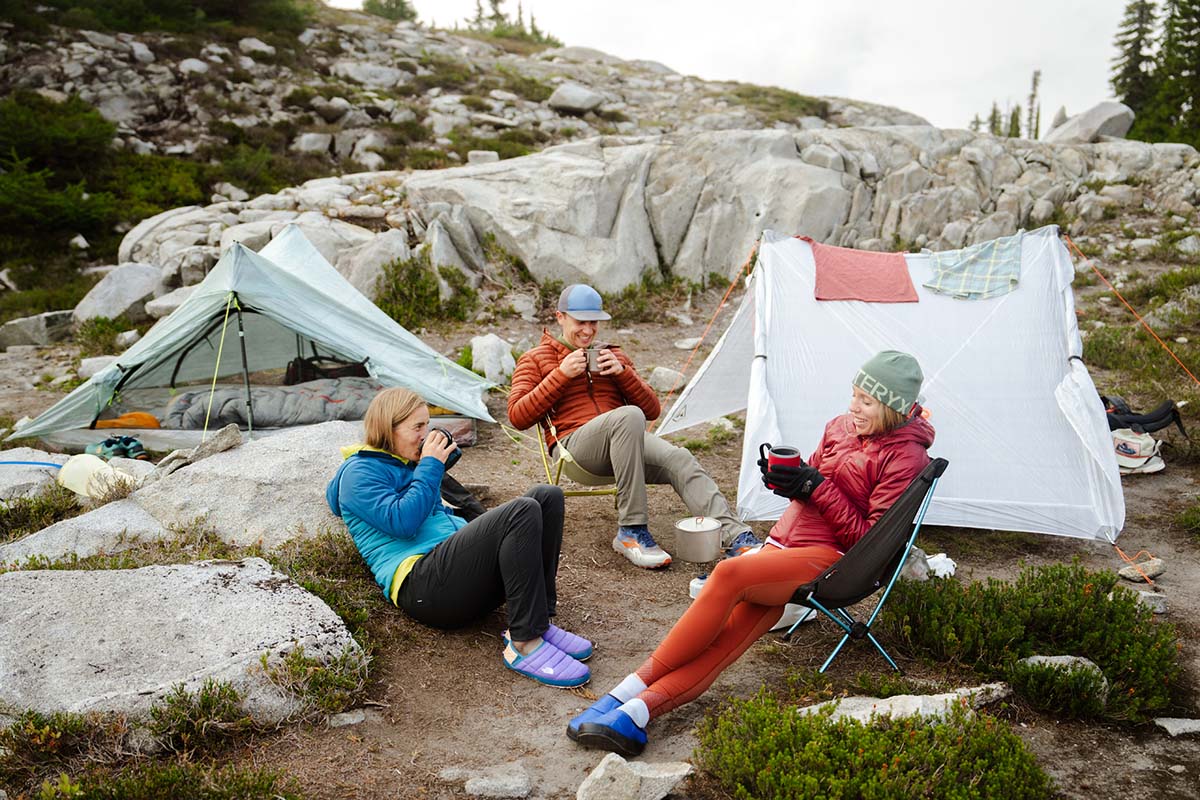
Wind
Most thru-hikers will stay predominantly below treeline while using the Zpacks Duplex Zip, but for good measure we gave it a thorough test in Washington’s high country. Surprisingly, the tent weathered wind and rain just as effectively as an ultralight freestanding or semi-freestanding tent. The structure was surprisingly stable even in strong gusts, although a proper pitch and strong anchors (tent stakes or large rocks) are absolutely essential, given that the tent relies on tension to stay up. I did notice that the large panels of fabric at each end flapped a great deal (earplugs would be helpful for light sleepers), but the Duplex Zip stayed in place and looked unaffected in the morning. All that said, if I were anticipating wind and had the option, I’d definitely opt for a more sheltered campsite.
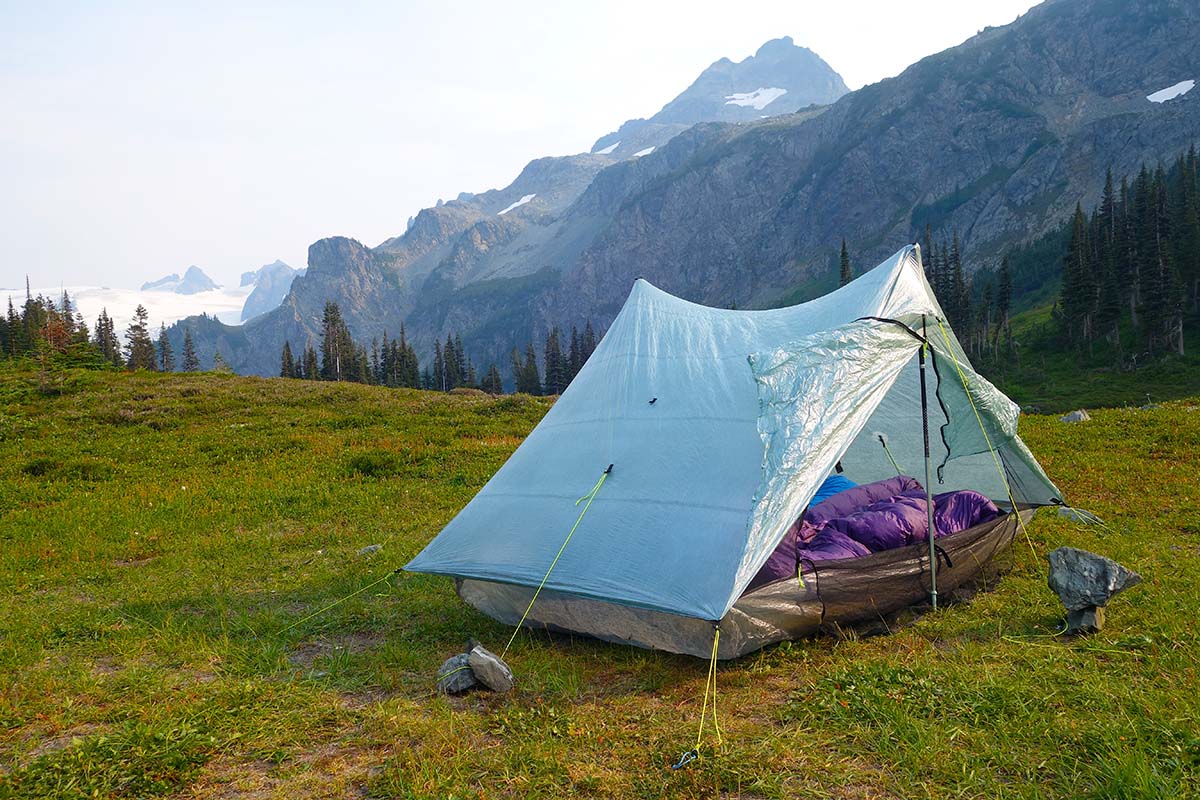
After one particularly windy night, I woke up to all of my gear (and face) covered in a fine layer of dirt and dust. This is one of the major shortcomings of mesh-heavy tents—we’ve had similar experiences with semi-freestanding designs like the Big Agnes Fly Creek HV UL2 and MSR FreeLite 2. To help, Zpacks added cinches that bring the Dyneema canopy and bathtub floor together at each end, closing the mesh gap. These are fairly effective but still don’t address the issue of debris entering through the mesh doors. In contrast, the Hyperlite Unbound does not include these cinches but offers slightly better wind resistance thanks to a lower pitch (although it by no means eliminates the issue of dirt and dust entering the tent). Tarptent’s Dipole 2 Li is perhaps the best trekking-pole design for high winds, with carbon-fiber struts on each end that increase stability in addition to patches of nylon fabric (instead of mesh) in the areas most vulnerable to gusts.
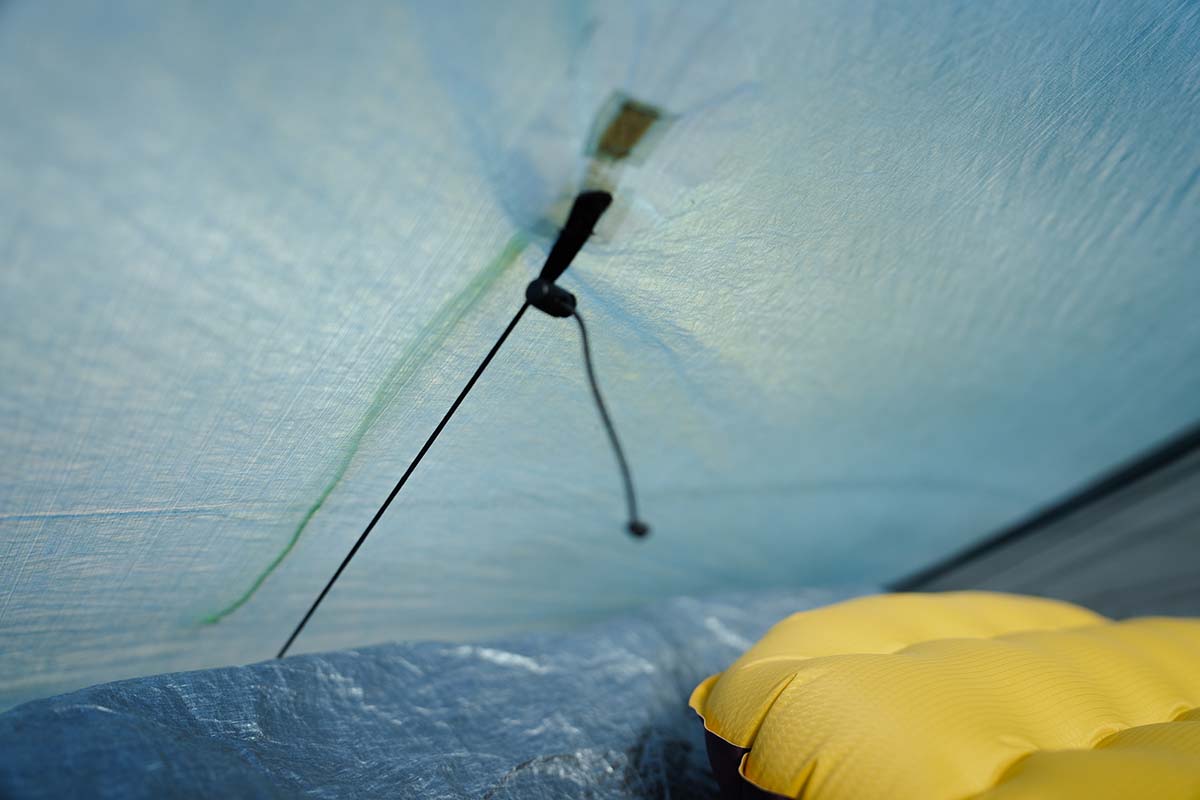
Rain
On one particularly wet and windy night, the Duplex Zip’s Dyneema canopy skillfully kept the steady rain at bay and retained its taut pitch in soaking conditions (unlike nylon, Dyneema does not sag when wet). However, the foot of my sleeping bag was very damp the next morning; my best guess is that this was due to rain drops bouncing off the ground and through the mesh doors (my tentmate and I had the aforementioned cinches tightened to close the mesh gap at each end). The interior of the Dyneema also felt wet to me, but it’s tough to say whether or not this was condensation or moisture seeping through. Regardless, you’ll want to be careful not to shake the tent or come into contact with the tent walls after rain.
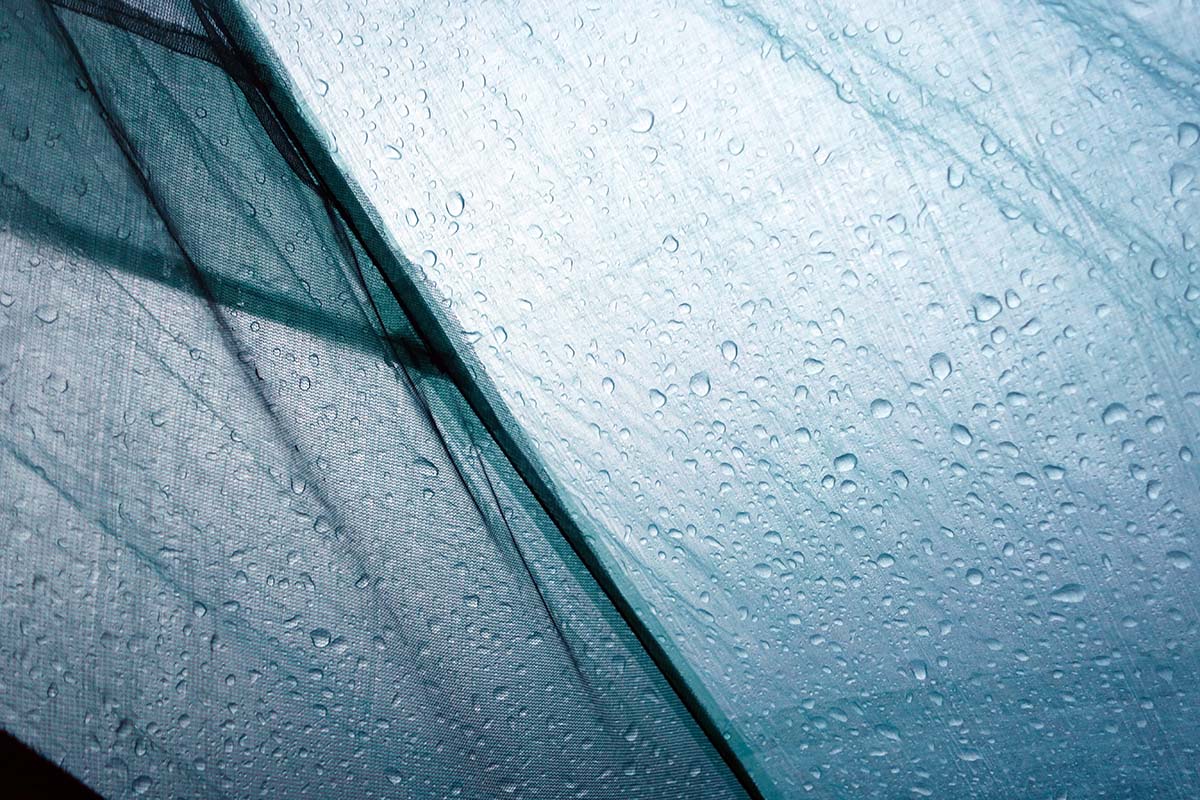
Getting caught in a rainstorm while tent camping is never ideal, but the Zpacks Duplex Zip is far from my first choice for a wet-weather shelter. It gets the job done to be sure, but comfort and confidence-inspiring protection is lacking. In terms of other options, a double-wall backpacking tent offers more separation between you and the wet fly, which can be really nice if you spend a lot of time sitting up inside. This design will also breathe better when fully zipped up, translating to a lot less condensation buildup (more on this below). What’s more, a tent with more solid material around the base will do a better job keeping out rain splashes (this is one of the main differences between a three- and four-season tent). But for mostly fair weather with the odd bit of rain mixed in, the Duplex Zip offers sufficient waterproofing at a very low weight.
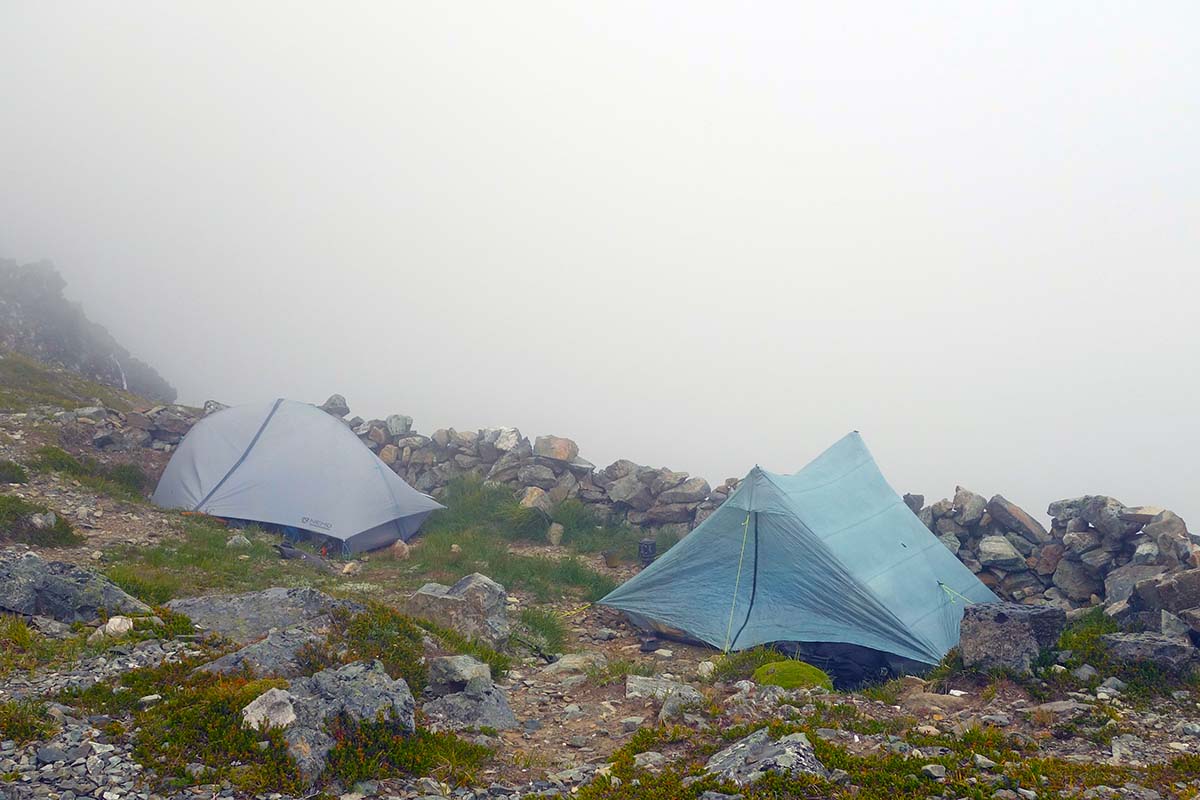
Dyneema isn’t known for its breathability, so ventilation is one of the Duplex Zip’s greatest challenges. To help, Zpacks placed vents at the top of each door to encourage a cross breeze, although in most cases these vents aren’t enough. In clear and calm conditions, it’s a good idea to open the doors on both sides, or at least on the downwind side. When you’re forced to batten down the hatches in the rain, the Duplex Zip does have a tendency to collect condensation. Because the fly hangs over the drip line when the vestibule doors are open, you can play with keeping the tent aired out even in wet weather. That said, if you plan to be out a lot in inclement weather, we recommend a double-wall shelter instead, where air can better flow out the mesh tent walls.
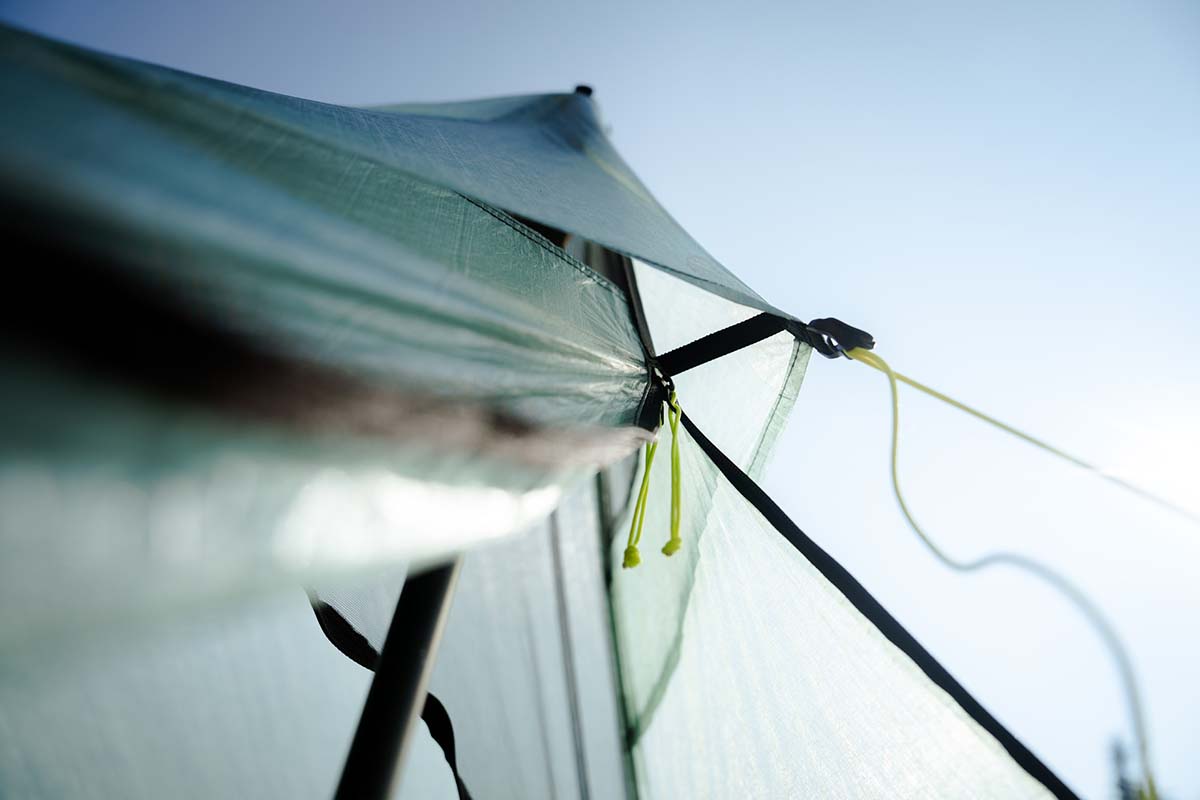
The Zpacks Duplex Zip has two small vestibules, which extend out from each door by 24 inches and form a triangle with the side of the tent. Similar to most trekking-pole tents, the vestibules are roomy enough to fit my backpacking pack and boots but not much more. However, because the tent’s mesh doors hinge from the bottom, you get a lot of versatility with where you enter and exit, which makes the vestibules feel a lot more spacious (the downside to this design is that the mesh doors hang loosely inside the bathtub floor, making them liable to abrasions). In terms of storage, you get two 8- by 8-inch pockets—one beside the door on each side. Although minimal, the Duplex Zip’s streamlined storage layout is standard for an ultralight tent; if you want more bells and whistles, look at standard backpacking tents like the Big Agnes Copper Spur HV UL2.
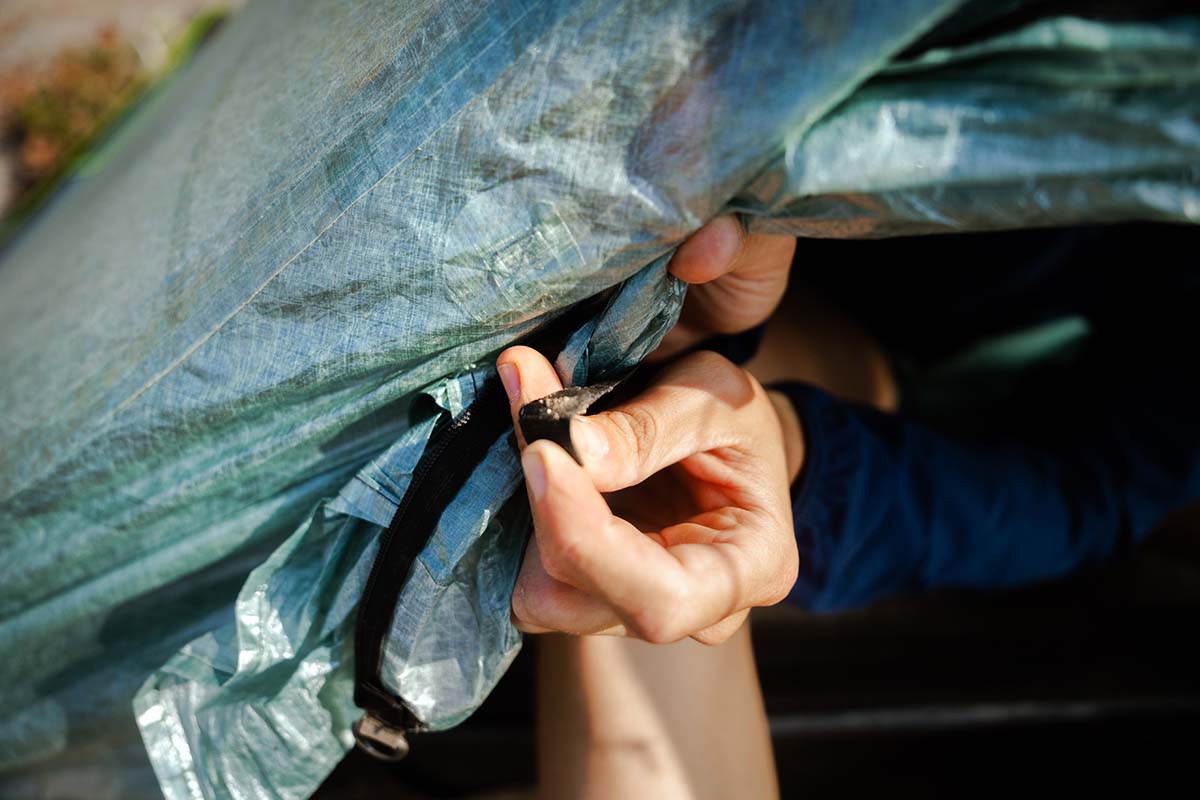
Trekking-pole tents rely on tension rather than their pole structure to stay pitched, which requires some extra attention during the setup process. However, the Zpacks Duplex Zip’s simple layout provided a much easier learning curve than I was anticipating. It’s really straightforward—you secure the four corners via stakes or large rocks, insert the trekking poles at each door, and tighten each guyline. There’s a bit of tweaking involved to get a perfectly taut pitch, but after just a few tries, I had my systems dialed. It's worth noting that a trekking-pole tent wouldn’t be my first choice if I were consistently camping in rocky alpine terrain—while large rocks can work for anchors, the pitch will be a lot more secure with tacky ground that you can drive stakes (and pole tips) into.
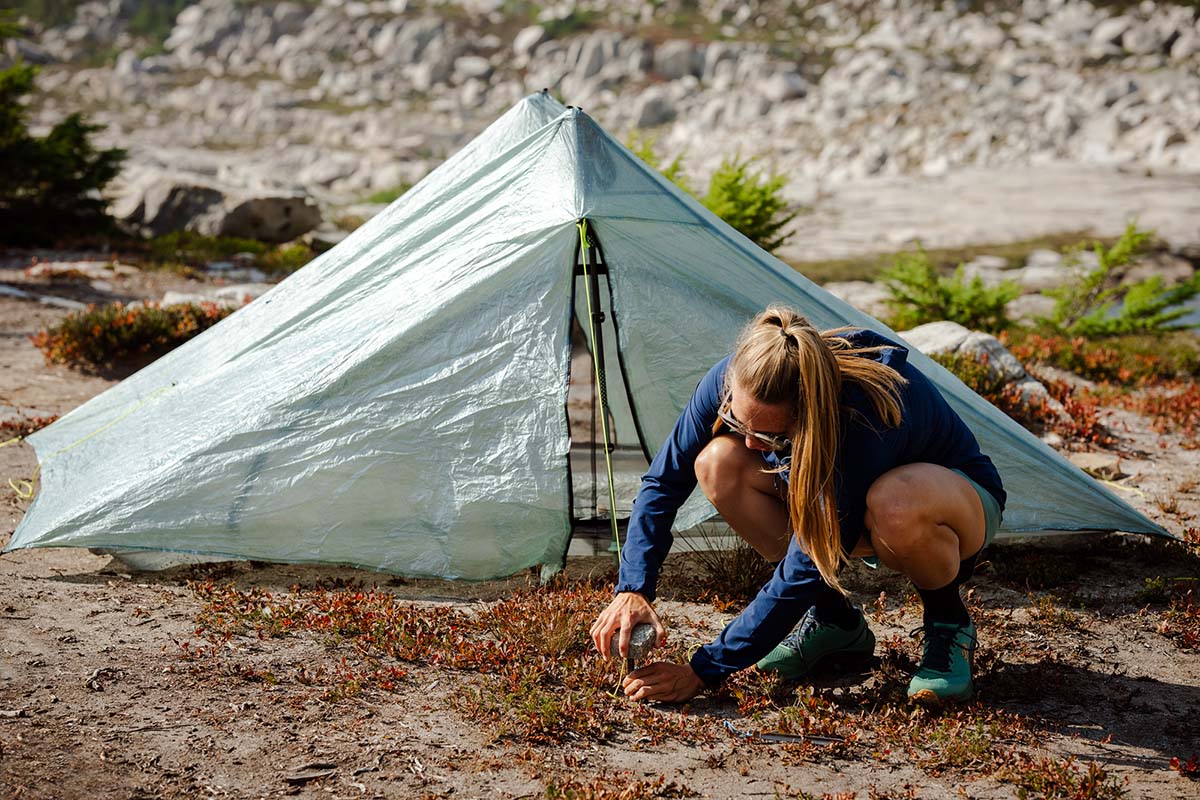
The trickiest part of the Duplex Zip’s pitch was getting the guylines on each side taut to both the tent and the door. Zpacks includes a hook on the main guyline, which extends up from the stake to secure to the loop at the end of each vestibule door. This system allows you to detach and roll back each door without affecting the integrity of the tent’s pitch. However, I found it really difficult to operate, and Zpacks included nothing in the way of instructions. By contrast, the Hyperlite Unbound’s system is easier to tighten and includes a buckle instead of a hook and loop, which is easier to toggle with just one hand and has a more premium feel.
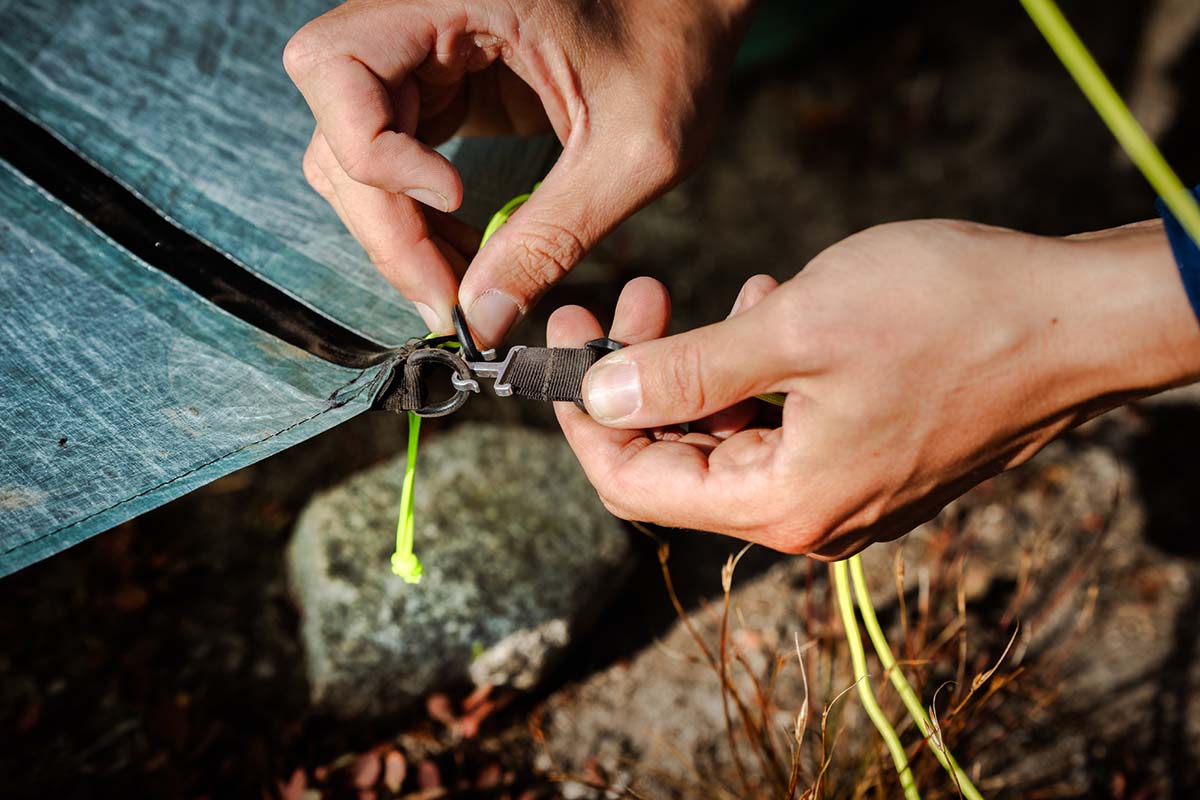
We tested the Duplex Zip for this review, and it’s also available in extra-long and three-person capacities. The DupleXL Zip is great for tall sleepers, with a 6-inch-longer footprint that only tacks on 2.2 ounces and $50 to the Duplex Zip. For those venturing out with a small child or furry friend, the Triplex Zip adds 15 inches of width at the cost of 3 ounces and $100 more. All three of the models in the “Zip” family feature zippered storm doors, peak vents, and magnetic door keepers. Zpacks also makes a full lineup of their standard design (without the aforementioned features), including one, two, and three-person varieties.
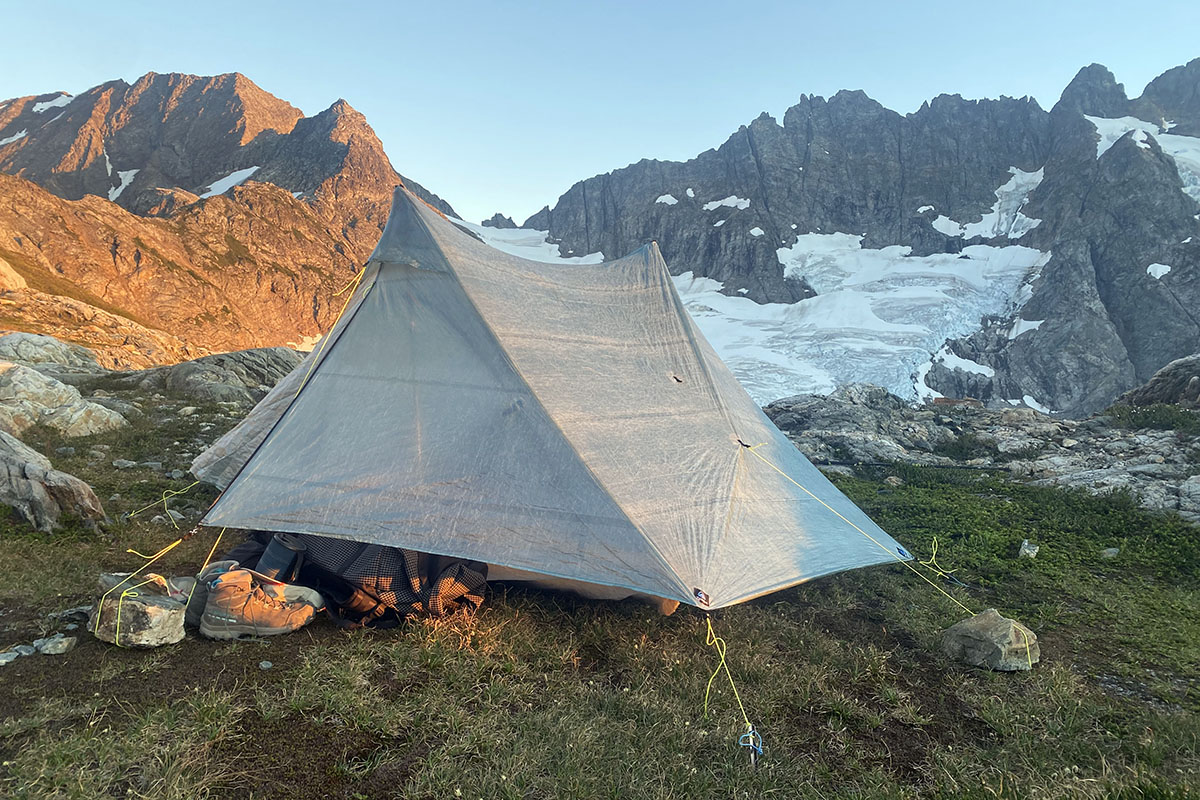
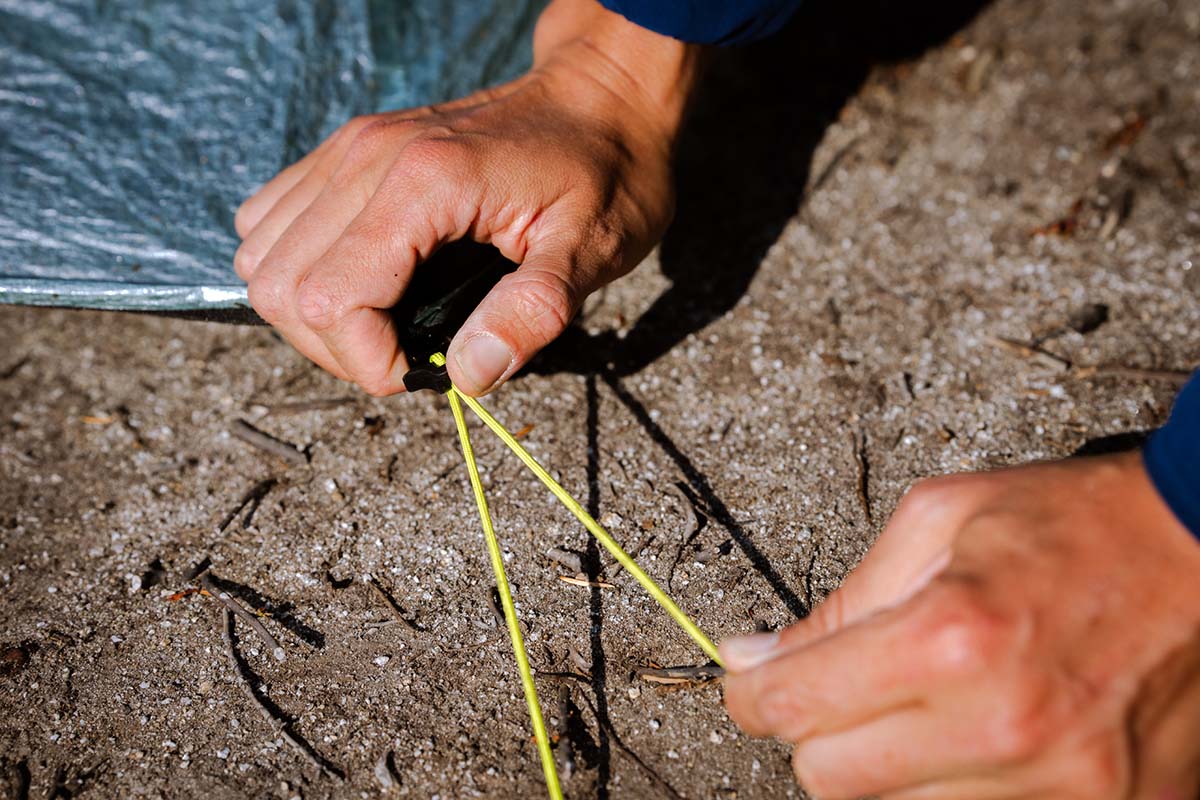
| Tent/Shelter | Price | Category | Weight | Floor Dimensions | Fly/Floor | Capacities |
|---|---|---|---|---|---|---|
| Zpacks Duplex Zip | $699 | Trekking pole | 1 lb. 4.4 oz. | 90 x 45 in. | DCF (.55/1.0 oz.) | 2P, 2+P, 3P |
| Hyperlite Unbound 2P | $699 | Trekking pole | 1 lb. 8 oz. | 90 x 48 in. | DCF (.55/.8 oz.) | 2P |
| Durston X-Mid 2 Pro | $739 | Trekking pole | 1 lb. 3.7 oz. | 90 x 46 in. | DCF (.55 oz.) | 1P, 2P, 2+P |
| Gossamer Gear The Two | $320 | Trekking pole | 1 lb. 7.9 oz. | 84 x 48/42 in. | Nylon (10D) | 1P, 2P |
| Tarptent Dipole 2 Li | $799 | Trekking pole | 1 lb. 10.8 oz. | 86 x 58 in. | DCF (.51/1.0 oz.) | 1P, 2P |
| Nemo Hornet Elite 2P | $650 | Semi freestanding | 2 lb. 1 oz. | 85 x 50/42 in. | Poly/nylon blend | 2P |
Zpacks’ Duplex (and now Duplex Zip) is arguably the most popular Dyneema A-frame trekking-pole tent, but there are a number of other high-quality options to consider. The Hyperlite Unbound 2P mimics just about everything about the Duplex Zip, with a few small but noteworthy differences. When testing the two tents back-to-back, we were struck by how premium the Hyperlite felt compared to the cottage-brand Duplex, and its added cool factor (by way of easier-to-operate components, contrasting Dyneema fabrics, and vibrant orange accents) was palpable. It also rides a bit lower to the ground, which can make a difference in wet and windy weather. But there are some concessions: The Unbound uses a thinner floor fabric than the Zpacks (0.8 vs. 1.0 oz./sq. yd.), doesn’t come with the option of a thicker canopy, and lacks the Duplex Zip’s cinches that close the mesh gap at both ends. And for weight weenies, it’s also 3.6 ounces heavier.
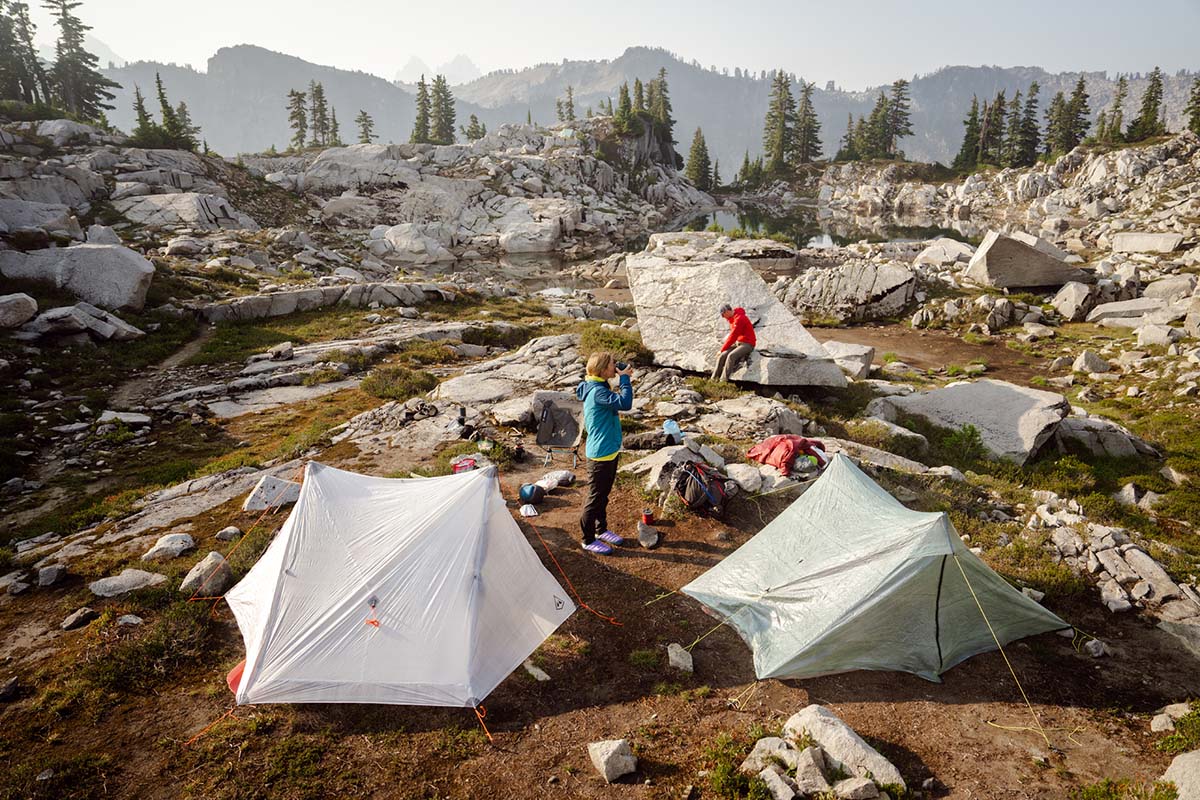
Canada-based Durston isn’t as big of a name as Zpacks, but their X-Mid 2 Pro gives the Duplex Zip a serious run for its money. Durston uses a well-engineered offset-pole design, which translates to a simple four-stake pitch (the Duplex Zip requires at least six stakes) and no mandatory guylines. This design also places the headroom near each head rather than at the center of the tent and offsets the vestibules so that their usable area is beside the door rather than in front. Other differences include a low-cut fly for better protection, a fully tensioned bathtub floor (the Zpacks’ is hanging), and the option for a silnylon floor, which is more packable and arguably more durable than Dyneema. All that added tech, and the Durston is still lighter than the Duplex Zip at just 1 pound 2.2 ounces. You’ll pay $40 more for the all-Dyneema version (and $60 less for the partial-nylon model), but Durston is a dark horse, and we think their X-Mid 2 Pro is the most well-rounded trekking-pole shelter currently on the market.
If you’re looking to save some cash, check out Gossamer Gear’s The Two. For $379 less than the Duplex Zip, The Two features a very similar single-wall trekking-pole design but swaps out the Dyneema for a nylon floor and fly. It checks in just a bit heavier at 1 pound 7.9 ounces, excluding stakes (the Zpacks’ weight spec also excludes stakes). But there are some noteworthy trade-offs: The Two’s floor area is considerably smaller and tapered (84 by 48/42 in.), and—unlike Dyneema—nylon is not naturally waterproof (it requires waterproof coatings, which will wear off over time) and has a tendency to sag when wet. The Two also has a reputation for gathering condensation, and you’ll have to employ similar ventilation tactics to those we mentioned for the Duplex Zip. But for ultralight backpackers looking to save money, the Gossamer Gear is a much-loved and time-tested option.
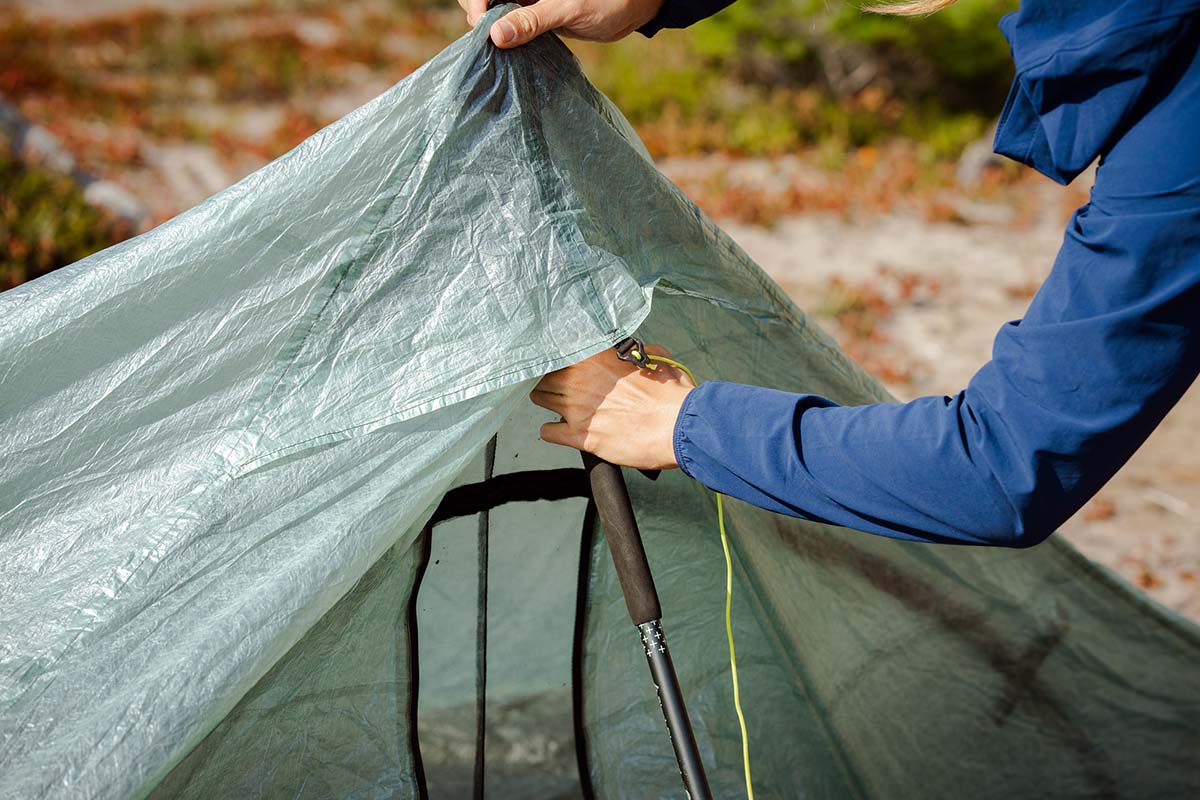
In a discussion of ultralight tents, we’d be remiss not to also mention Tarptent, which offers a large selection of one, two, and three-person designs. Their Dipole 2 Li is an innovative spinoff of the standard A-frame trekking-pole tent, addressing issues of condensation, weather protection, and livable space. It adds 21-inch carbon-fiber struts (these remove and collapse to 13 in.) at each end of the tent, which does three things. First, the struts increase headroom throughout the tent and facilitate a more gently sloping roof throughout. Second, by offering a few more points of contact, they increase the tent’s stability in wind, which also helps decrease flapping. And finally, Tarptent placed mesh vents at each end (these can be closed on windy or rainy nights) for improved ventilation. The Dipole is considerably heavier than the Zpacks at 1 pound 10.8 ounces (excluding stakes) and expensive at $799, but the improvements could be well worth it for those who spend a lot of time in inclement weather.
Finally, if you’re in the market for an ultralight tent, it’s also worth considering a semi-freestanding design like the high-end Nemo Hornet Elite Osmo 2P. The Hornet Elite is the heaviest model here at 2 pounds 1 ounce (including stakes), but you won’t find a lighter semi-freestanding tent. There are two primary benefits to the design: First, a semi-freestanding tent doesn’t rely on tension to maintain a taut pitch, which is especially helpful when camping on large slabs (you’d need very heavy rocks to secure the Duplex Zip). Second, due to the double-wall design, ventilation is vastly improved. All told, the Hornet Elite is a user-friendly design for new backpackers or those who don’t like to fiddle with their gear. But there are drawbacks: Its thin fabrics aren’t nearly as hardwearing as Dyneema (although the fly is sag-resistant thanks to Nemo’s Osmo technology), and the floor area is much smaller and tapered at 85 by 50/42 inches. But if you want to go ultralight without dipping into the trekking-pole market, the Nemo Hornet Elite is your best bet.
Editor’s note: We usually provide a live price comparison table below our outdoor gear reviews, but the Duplex Zip is sold exclusively by Zpacks. You can see the Duplex Zip page here and support us in the process. Thanks!